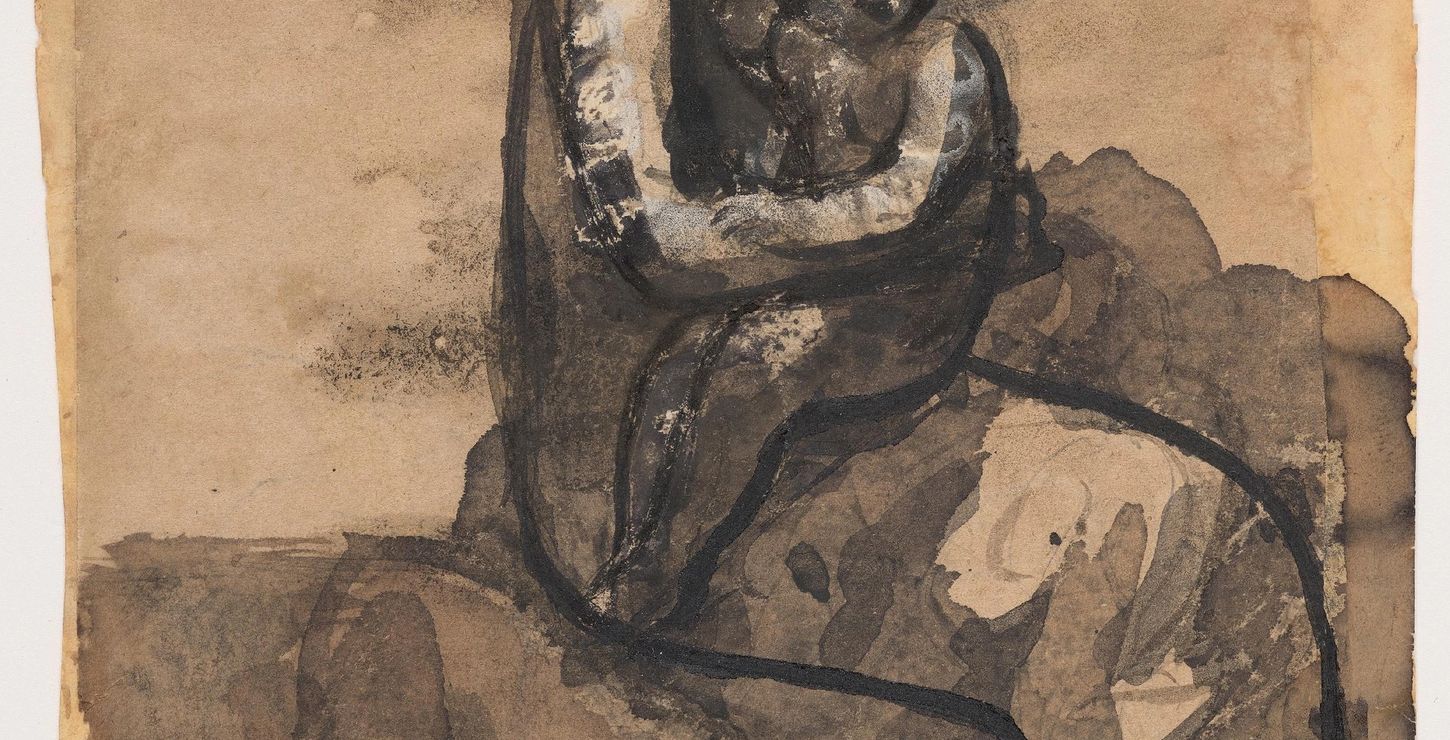Main Building
Auguste Rodin (French, 1840-1917) saw himself as the heir to a tradition of monumental nude sculpture in western art that stretched from ancient Greece and Rome, through the Renaissance, down to his own day. Within this tradition, Rodin expressed special esteem for the Italian Renaissance sculptor Michelangelo Buonarroti (1475-1564). "My liberation from academicism was via Michelangelo," he stated. As soon as Rodin began to achieve fame, around 1880, critics too recognized his debt to Michelangelo, seeing in the Frenchman's sculptures something of the fierce tension and expressivity that they honored in the Renaissance master's works. In old age, as he contemplated his place in history, Rodin himself often spoke about his admiration for Michelangelo, thus insuring that the association of the two names would flourish. For more than a century, the comparison of Rodin with Michelangelo has been a central topic in the study of Rodin's art. This exhibition brings together drawings and sculptures by the two artists in order to suggest what Rodin learned from Michelangelo, and how he adapted the lessons of Michelangelo to his own, very different, sculptural concerns. While it includes both earlier and later drawings and sculptures, the exhibition centers on a trip to Italy that Rodin took early in 1876, and on the works of art that resulted from it. Fiercely ambitious but still unsuccessful as an independent sculptor, Rodin was overwhelmed in Italy both by the art of Michelangelo and by the extravagant adulation lavished on the sculptor during the 400th anniversary of his birth. In Florence, Rodin studied Michelangelo's sculptures in the Medici Chapel, evoked in this exhibition by plaster casts of one monumental marble ensemble. Two sketches that Rodin made in the chapel are included in the exhibition. Several drawings and small-scale sculptures by Michelangelo that Rodin saw at the Casa Buonarroti, the museum dedicated to Michelangelo, are also included. Moving on to Rome, Rodin contemplated Michelangelo's great paintings in the Sistine Chapel, including The Last Judgement , whose impact on Rodin's imagination would emerge most fully several years later as he worked on his own monumental and turbulent work, The Gates of Hell, a bronze cast of which stands nearby at the Rodin Museum. Returning to Brussels in the spring of 1876, Rodin attempted to absorb the impact of Michelangelo's work. Never a mere imitator of Michelangelo, nor concerned with the deep religious impulses of his art, Rodin studied Michelangelo in order to plumb the expressive potential of the naked body in situations of passion and duress. He filled sketch after sketch with figures in Michelangelo-like poses, and began the series of monumental nude sculptures, powerfully evocative of Michelangelo, that announced his own brilliant artistic maturity. One scholar has called Rodin's Italian journey of 1876 "one of the seminal events in modern art," for from Rodin's tense confrontation with Michelangelo, in Italy and afterwards, sprang one of the most innovative and influential bodies of work in modern sculpture.
Itinerary
Casa Buonarotti, Florence
Philadelphia Museum of Art
